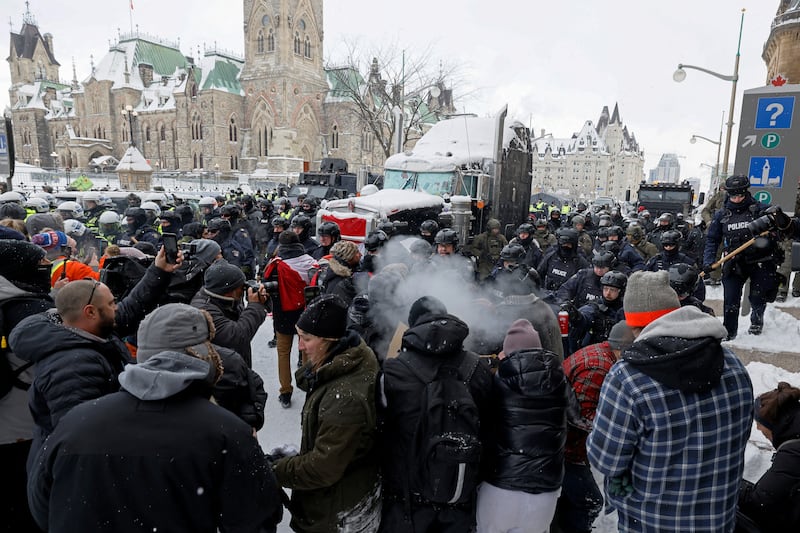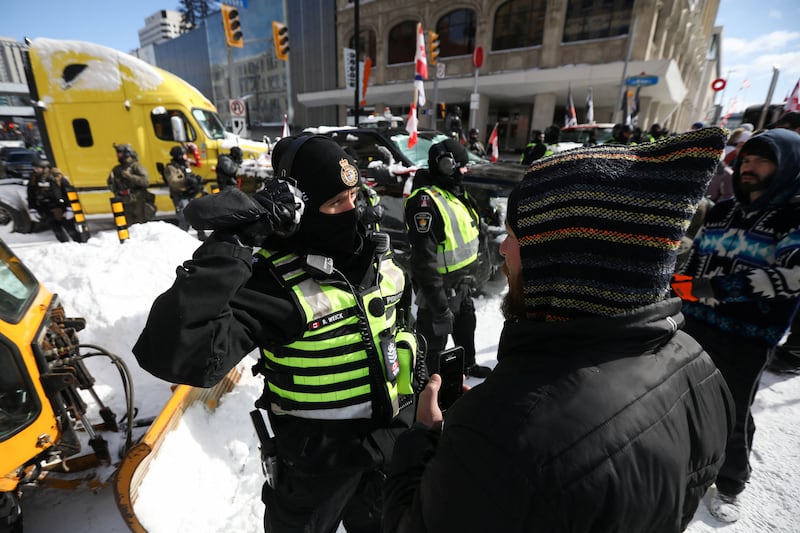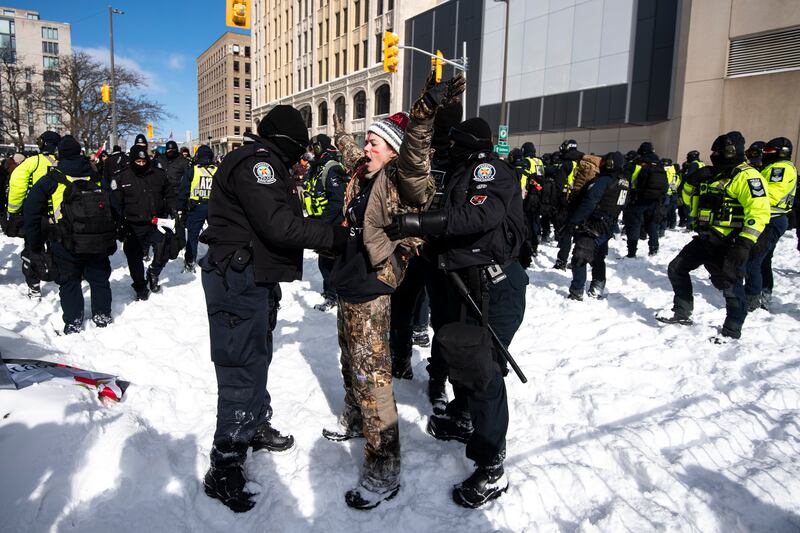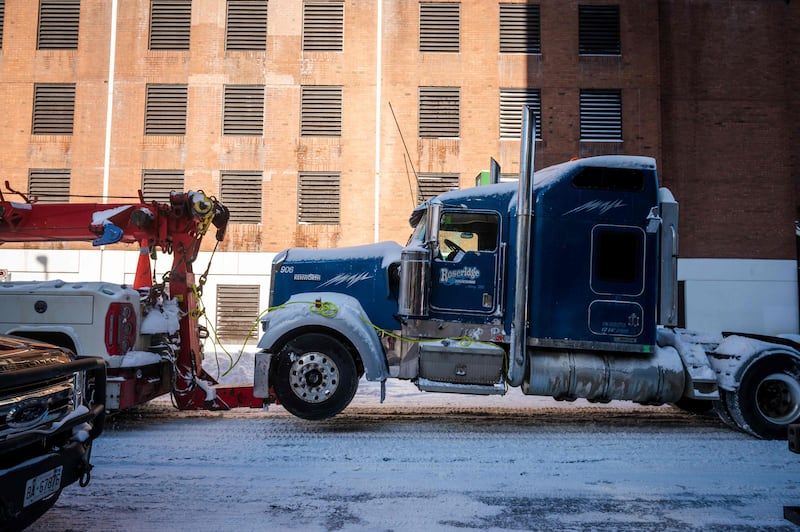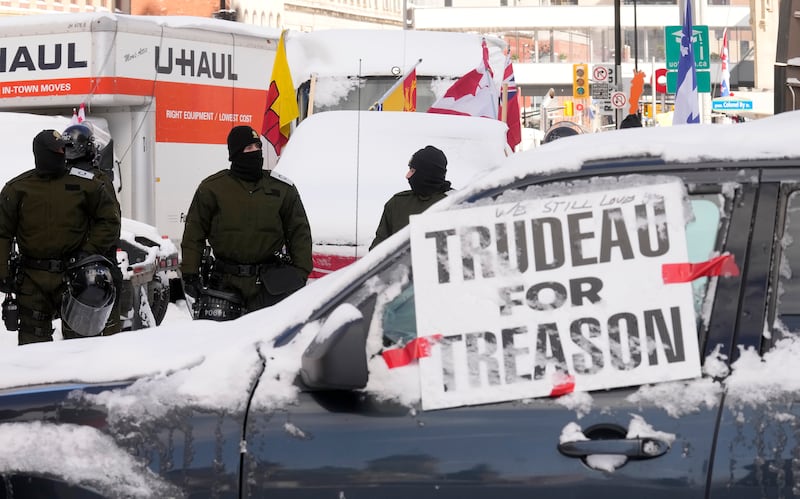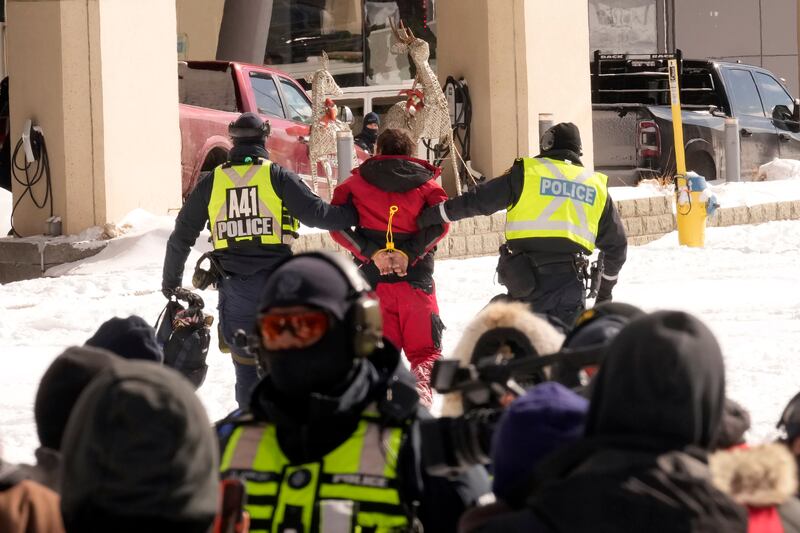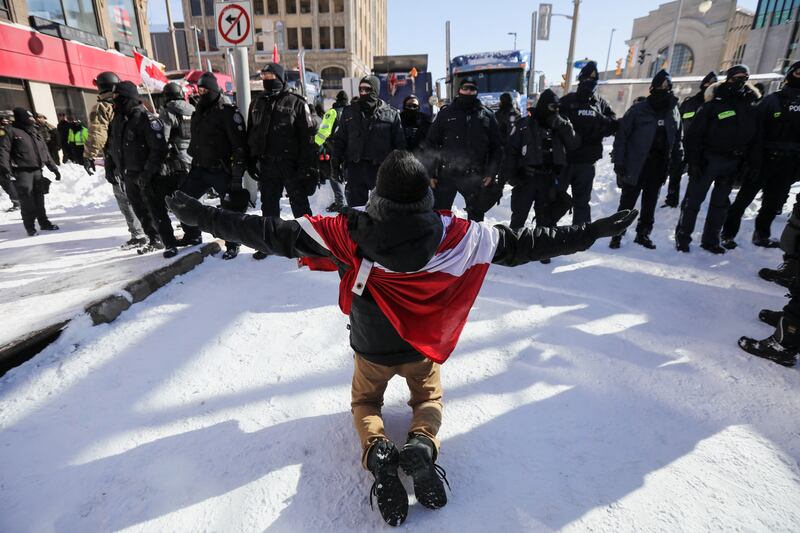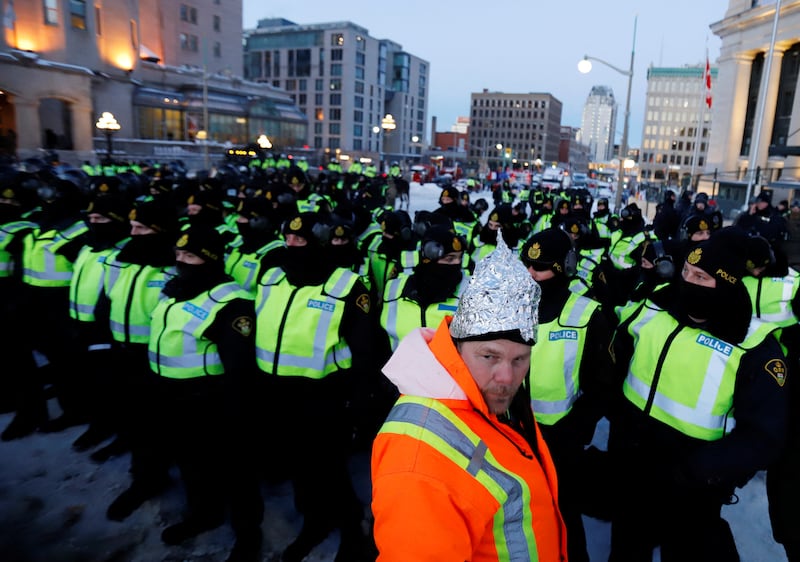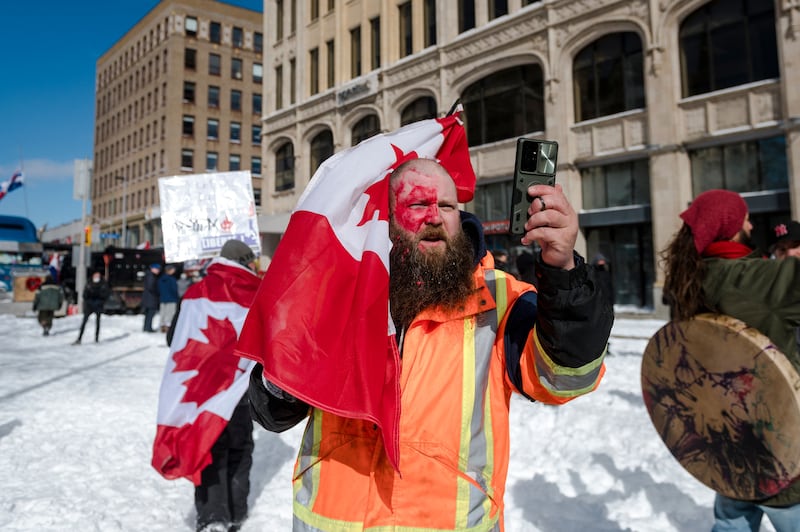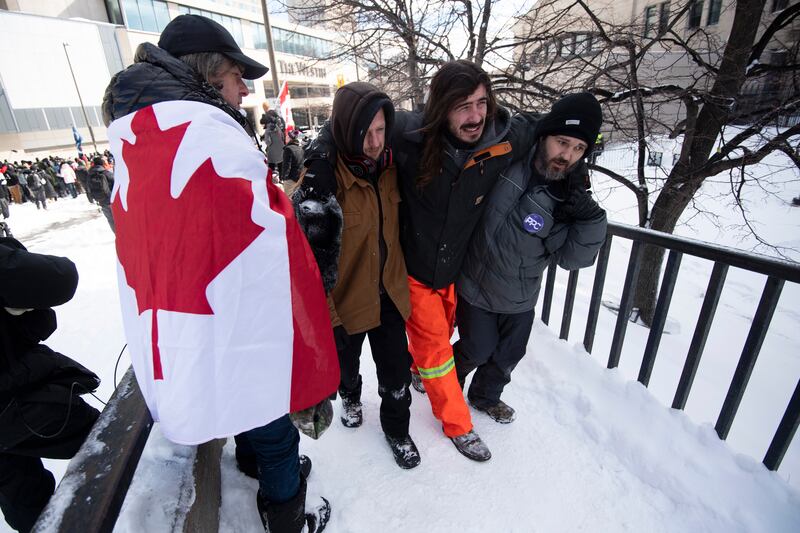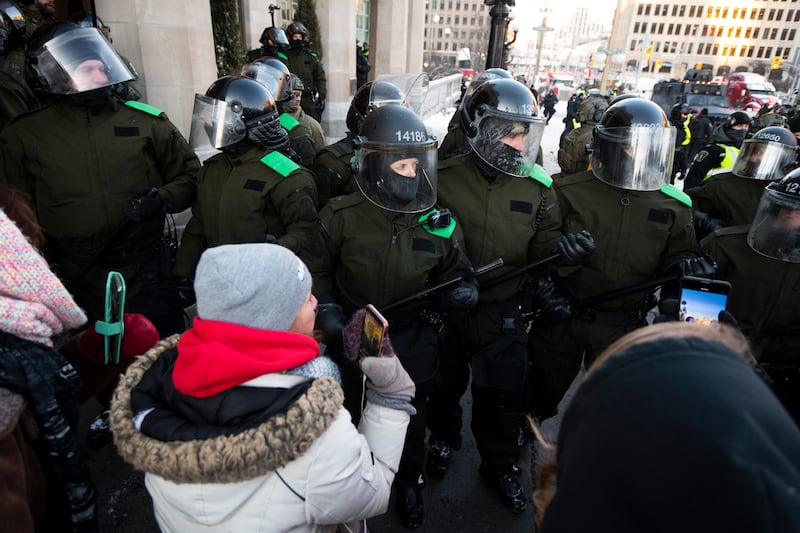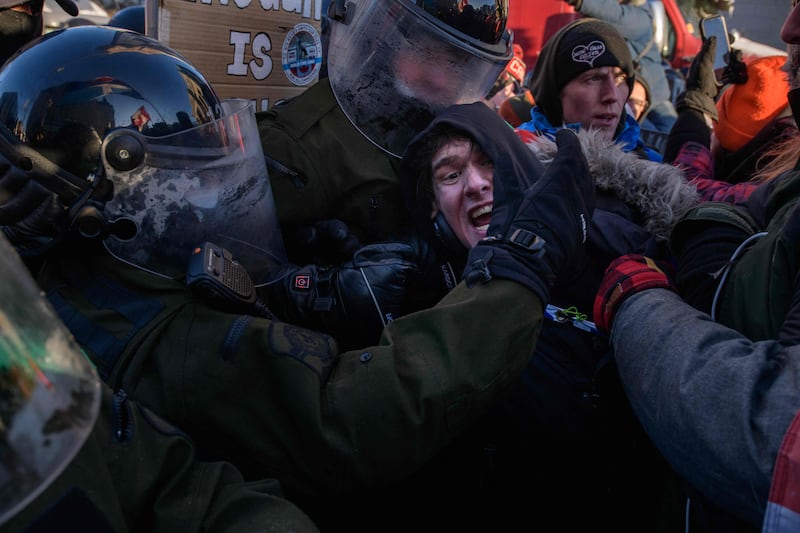Riot police used force to clear the main protest centre in downtown Ottawa on Saturday, using batons and pepper spray and making dozens of arrests to remove a holdout group of demonstrators occupying the Canadian capital.
In a day-long show of force, hundreds of officers pushed into the city centre – facing determined protesters who hurled smoke canisters at advancing police, linking arms and chanting "freedom".
By the afternoon, police backed by tactical vehicles and watched over by snipers had cleared Wellington Street in front of the Canadian parliament – the epicentre of the lorry driver-led demonstrations that started almost a month ago over coronavirus health rules.
Lorries were towed away and tents, food stands and other structures set up by the demonstrators were torn down.
Ottawa interim police chief Steve Bell told a news conference "very important progress" had been made on day two of the operation to clear the protesters, although he said it was "not over".
On side streets around the parliament, a police message broadcast by loudspeaker urged remaining demonstrators, "You must leave, [or] you will be arrested."
A few hundred ignored the order, braving bone-chilling cold into the night while waving Canadian flags, setting off fireworks at a barricade and singing the 1980s rock song, We're Not Gonna Take It.
Canadian police begin arresting protesting lorry drivers
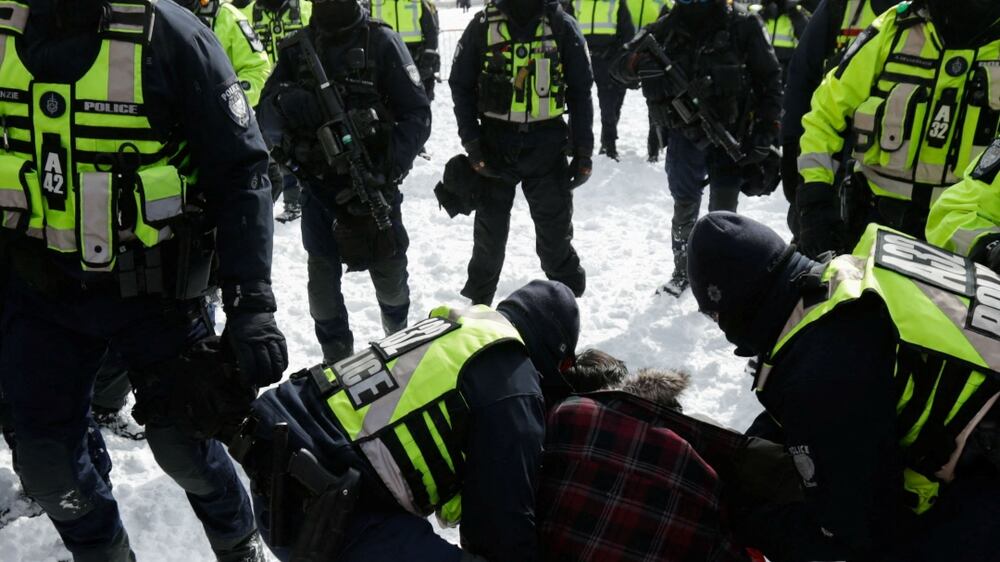
Bell said 170 people had been arrested, 47 of them on Saturday.
He also called out parents for putting their children "at risk" by bringing them "to the front of our police operation."
As tensions increased, police used what they called a "chemical irritant" – apparently pepper spray – against protesters, who they said were being "assaultive and aggressive," launching gas canisters at officers.
Organisers of the so-called freedom convoy meanwhile accused police of beating and trampling demonstrators, telling supporters to leave "to avoid further brutality".
Some lorry drivers chose to depart as the police closed in, moving their 18-wheelers away after weeks of demonstrations that at their peak drew 15,000 to the capital.
Others were defiant. "I'm not leaving," said Johnny Rowe at the start of the day.
"There's nothing to go back to," he told AFP. "Everybody here, myself included, has had their lives destroyed by what's happened in the past two years."
"I'm freezing, but I'm staying," echoed a protester who gave his name as Brian.
An AFP journalist also observed a steady flow of protesters leaving the area.
"We're taking it somewhere else," said musician Nicole Craig.
"Even if the truckers have left town, the protest will continue. This fight is not over," her husband Alex said.
Within minutes of arriving on Saturday morning, police took position on a section of road in front of the prime minister's office.
Officers pointed guns as they smashed lorry windows and ordered occupants out, with smoke filling the air.
Emergency powers
As the operation unfolded outside parliament, inside the complex, lawmakers resumed debating Prime Minister Justin Trudeau's controversial use of emergency powers – for the first time in 50 years – to end the protests.
The Ottawa police operation was the largest yet seen in the capital, drawing hundreds of officers from across the nation.
Bell said police had opened several criminal investigations "that relate to the seizure of weapons".
He told participants in the protest that authorities, who have frozen $32 million in donations and bank accounts so far, "will actively look to identify you and follow up with financial sanctions and criminal charges".
The Canadian lorry convoy, which inspired similar demonstrations in other countries, began as a protest against mandatory vaccines to cross the US border.
Its demands grew, however, to include an end to all pandemic rules and, for many, a wider anti-establishment agenda.
At its peak, the movement also included blockades of US-Canada border crossings, including a key trade route across a bridge between Ontario and Detroit, Michigan – all of which have since been lifted after costing the economy billions of dollars, the government said.
Criticised for failing to act decisively on the protests, Mr Trudeau this week invoked the Emergencies Act, which gives the government sweeping powers to deal with a major crisis.
But politicians split over their use.
Mr Trudeau has said the act was not being used to call in the military against the protesters and denied restricting freedom of expression.
The objective was simply to "deal with the current threat and to get the situation fully under control," he said. "Illegal blockades and occupations are not peaceful protests."
